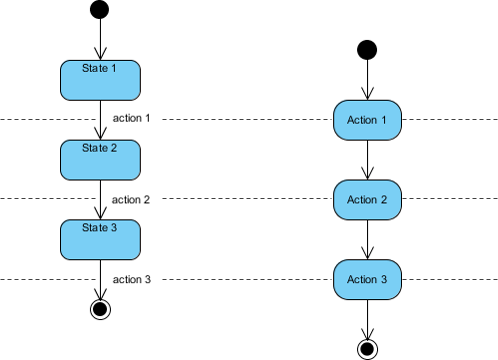Perbedaan State Diagram Dengan Activity Diagram For Airline
Search the world's information, including webpages, images, videos and more. Google has many special features to help you find exactly what you're looking for. AVSIM Library Where Flight Simulation Enthusiasts Gather from Around the World! Perbedaan State Diagram Dengan Activity Diagram For College.
Practically, due to time and budget considerations, it is not possible to perform exhausting testing for each set of test data, especially when there is a large pool of input combinations. • We need an easy way or special techniques that can select test cases intelligently from the pool of test-case, such that all test scenarios are covered. • We use two techniques - Equivalence Partitioning & Boundary Value Analysis testing techniques to achieve this. In this tutorial, we will learn • • • • • What is Boundary Testing? Boundary testing is the process of testing between extreme ends or boundaries between partitions of the input values. • So these extreme ends like Start- End, Lower- Upper, Maximum-Minimum, Just Inside-Just Outside values are called boundary values and the testing is called 'boundary testing'.
• The basic idea in boundary value testing is to select input variable values at their: • Minimum • Just above the minimum • A nominal value • Just below the maximum • Maximum • In Boundary Testing, Equivalence Class Partitioning plays a good role • Boundary Testing comes after the Equivalence Class Partitioning. What is Equivalent Class Partitioning? Equivalent Class Partitioning is a black box technique (code is not visible to tester) which can be applied to all levels of testing like unit, integration, system, etc. In this technique, you divide the set of test condition into a partition that can be considered the same. • It divides the input data of software into different equivalence data classes.
• You can apply this technique, where there is a range in the input field. Gundam z sub indonesia empress movie. Example 1: Equivalence and Boundary Value • Let's consider the behavior of Order Pizza Text Box Below • Pizza values 1 to 10 is considered valid. A success message is shown. • While value 11 to 99 are considered invalid for order and an error message will appear, 'Only 10 Pizza can be ordered'. Order Pizza: Here is the test condition • Any Number greater than 10 entered in the Order Pizza field(let say 11) is considered invalid.
• Any Number less than 1 that is 0 or below, then it is considered invalid. • Numbers 1 to 10 are considered valid • Any 3 Digit Number say -100 is invalid. We cannot test all the possible values because if done, the number of test cases will be more than 100. To address this problem, we use equivalence partitioning hypothesis where we divide the possible values of tickets into groups or sets as shown below where the system behavior can be considered the same. The divided sets are called Equivalence Partitions or Equivalence Classes.
Then we pick only one value from each partition for testing. The hypothesis behind this technique is that if one condition/value in a partition passes all others will also pass.

Likewise, if one condition in a partition fails, all other conditions in that partition will fail. Boundary Value Analysis- in Boundary Value Analysis, you test boundaries between equivalence partitions In our earlier example instead of checking, one value for each partition you will check the values at the partitions like 0, 1, 10, 11 and so on. As you may observe, you test values at both valid and invalid boundaries. Boundary Value Analysis is also called range checking. Equivalence partitioning and boundary value analysis(BVA) are closely related and can be used together at all levels of testing.
